Valentina Petrillo is the first out trans woman to compete in the Paralympics: a milestone in inclusion, met with criticism
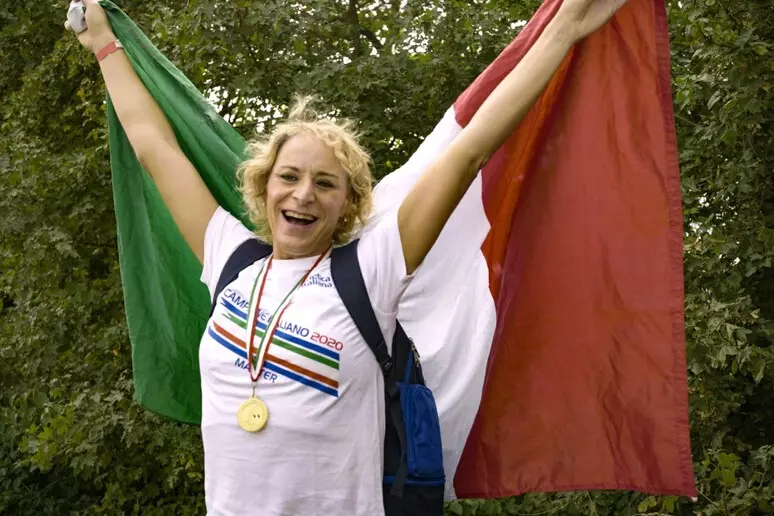
Photo: Marco Mensa – Ethnos | Copyright: ANSA
A Spanish Lawyer calls for exclusion of trans athletes by attacking Valentina Petrillo
Even though there were no trans athletes at the Paris Olympics, a lot of misinformation and certain political agendas once again put the dignity and rights of TIN (Trans, Intersex, and Non-Binary) people, particularly trans individuals, under an uncomfortable spotlight.
But now, at the Paralympics, there will be a trans woman competing. Italian sprinter Valentina Petrillo is the first trans woman to compete at the Paralympic Games.
But who is Valentina Petrillo? She is a trans woman and a visually impaired Paralympic athlete from naples, Italy. In 2018, Valentina began her gender affirmation journey, halting her promising career in male competitions. After a long and challenging journey, she achieved her goal of qualifying for the Paris 2024 Paralympics. She now has two bronze medals from the 2023 Paralympic World Championships and will compete in the 200 and 400 meters starting September 2nd at the 17th edition of the Paralympic Games.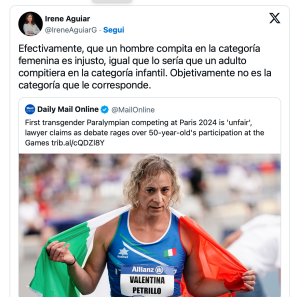
The accusation against Valentina Petrillo
It would be awesome if the focus were on Valentina’s sports achievements and the hope her participation brings to all trans and disabled people, often excluded from physical activities. However, instead of celebrating this significant step towards inclusion, some are questioning whether Petrillo belongs at the Paralympics, or even insinuating if she unfairly took someone else’s spot. Spanish lawyer Irene Aguiar is among those, and she is advocating on behalf of Spanish athlete Melani Berges.
Aguiar argues that Berges was excluded from the Paralympics because of Petrillo, whose only “fault” was finishing just 0.08 seconds ahead of her in the qualifier for Paris 2024. The lawyer launched a case against the participation of trans athletes in female Paralympic competitions, garnering support from conservative circles that typically show little interest in sports unless it supports their hateful agenda.
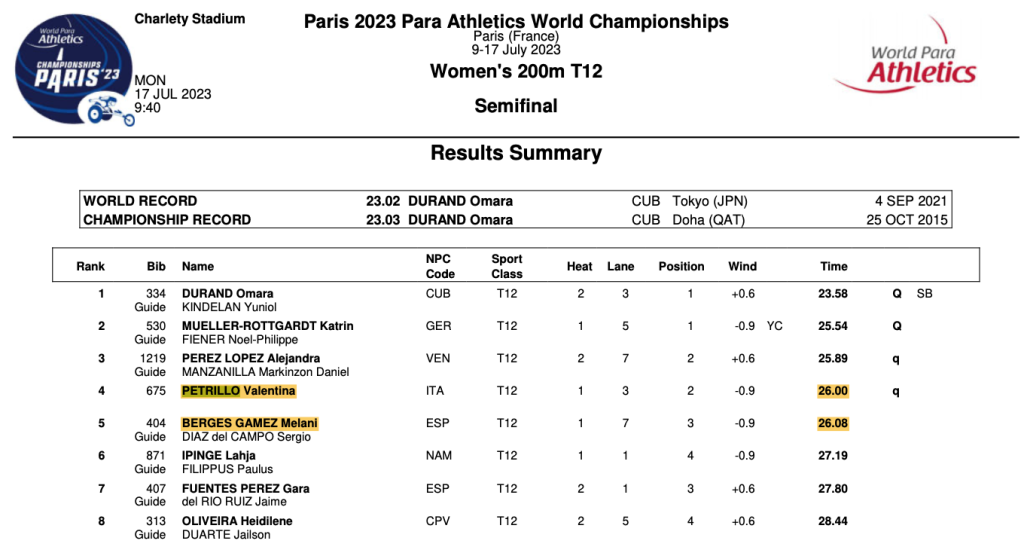
Just two months before the qualifier, Berges defeated Petrillo by 0.43 seconds in another competition—a significant difference in athletics.
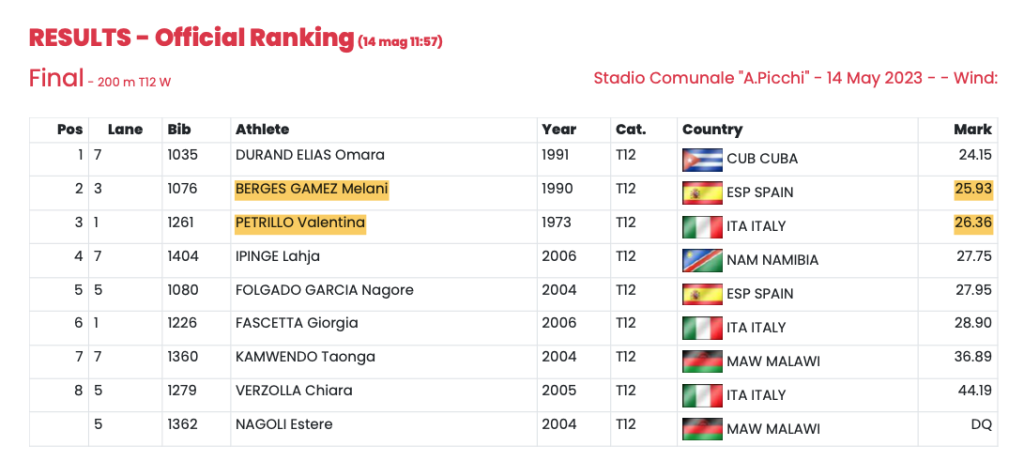
Furthermore, in the world rankings for the T12 class 200 meters, Berges is ranked higher than Petrillo, ninth versus tenth.
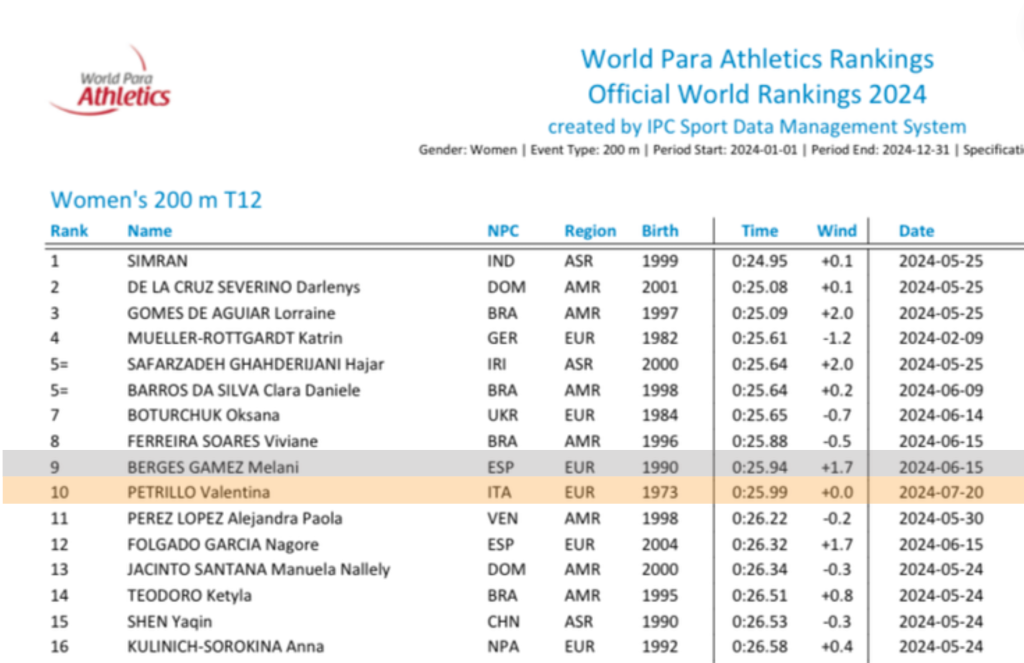
The selections for the Paralympics.
Aguiar doesn’t consider how Paralympic selections are determined. The final decision on who participates lies with the national Paralympic committees, as athletes qualify for a “slot”, rather than direct participation. The Spanish Paralympic Committee could have chosen to call up Berges regardless of the race outcome.
Without those 0.08 seconds, there likely wouldn’t be any controversy. It’s easy to complain about the rules only when you lose, especially against a competitor you’ve already beaten multiple times before. So much for the notion of a “structural advantage.”
Let’s recap: Berges is ranked higher than Petrillo in the world rankings. The Spanish Paralympic Committee could have selected her anyway. But this discussion shouldn’t even be necessary because Valentina complies with the Paralympic Committee’s rules and has every right to compete in the women’s category.
First and foremost, Valentina Petrillo is legally a woman. She cannot compete in men’s races. Given the current structure of sports, this would exclude her entirely. The Paralympic Committee has chosen to fully adhere to the IOC’s guidelines on non-discrimination of trans and intersex athletes, unlike World Athletics, which currently excludes trans women who began their transition after male puberty.
Imagine complying with all the testosterone regulations, only to have the rules change overnight, retroactively barring you from competition because the new criteria only apply to those who had the opportunity to suppress puberty—a treatment that has only been widely available for about 10 years. This is what happened to Petrillo in the realm of able-bodied athletics, where she was retroactively barred from competing, despite having met all the criteria up to that point.
Some argue that some athletes “change gender” to win. Can you imagine altering your life, taking medication, coming out with your network and changing your body, just to win a medal? Such claims are beyond absurd (in Petrillo’s case, she had already won 12 national titles in male Paralympic categories, so winning was never an issue).
Before and after: Valentina Petrillo confirms studies on trans women athletes
Moreover, her performance has declined by almost 2 seconds after her gender affirmation, which is a significant time difference in athletics, because mere hundredths of a second may often decide a race.
For example, her time in the 400 meters was 56.67 seconds in 2018, during her previous male career. Now, her qualifying time for Paris 2024 is 58.33 seconds in the same event.
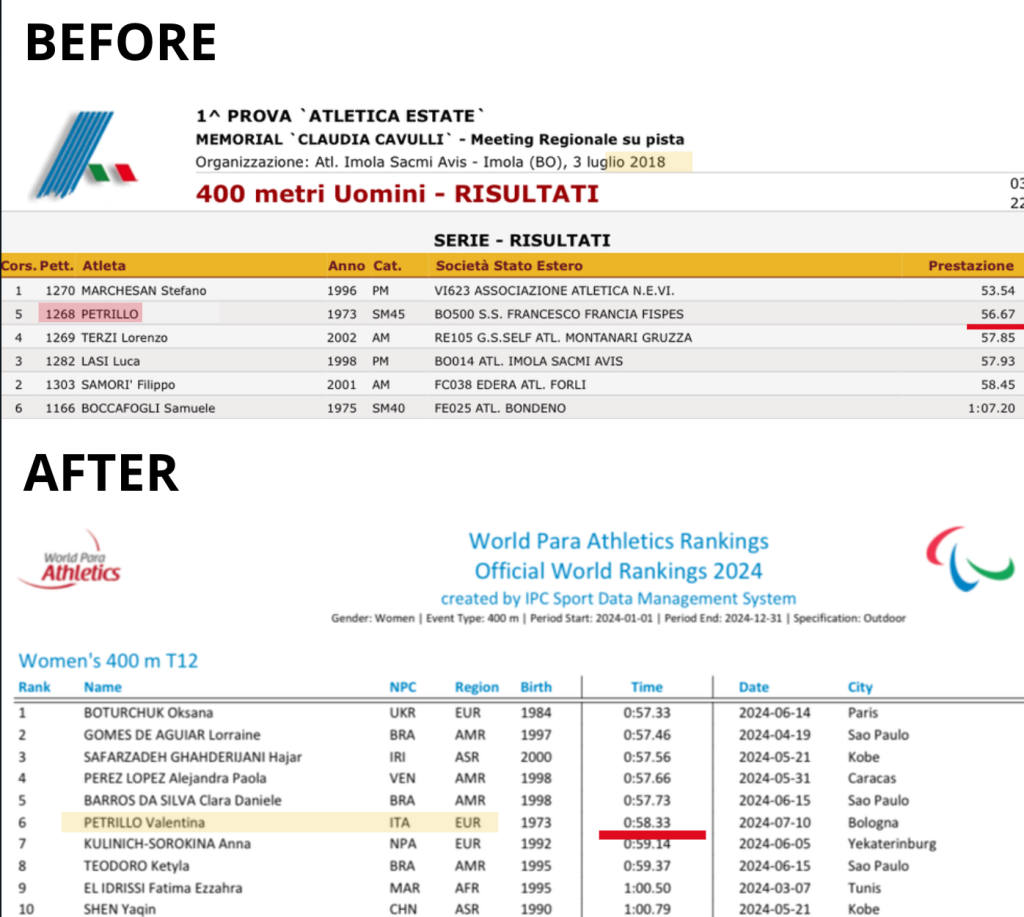
Whose structural advantage?
Finally, let’s address the question of whether there is a “structural advantage.” Whose structural advantage?
Petrillo ranks sixth in the world for the 400 meters in her category, and tenth in the 200 meters. While men’s times are generally faster than women’s, the IOC reiterated in a study published in The British Journal of Medicine (April 2024) that male-female statistics in sports cannot be used to make decisions about trans athletes. The same study shows that after two years, hormone therapy can actually create a disadvantage compared to cisgender women in certain aspects like leg strength, aerobic capacity, and respiratory function. Petrillo finished fifth in the 2021 Paralympic European Championships.
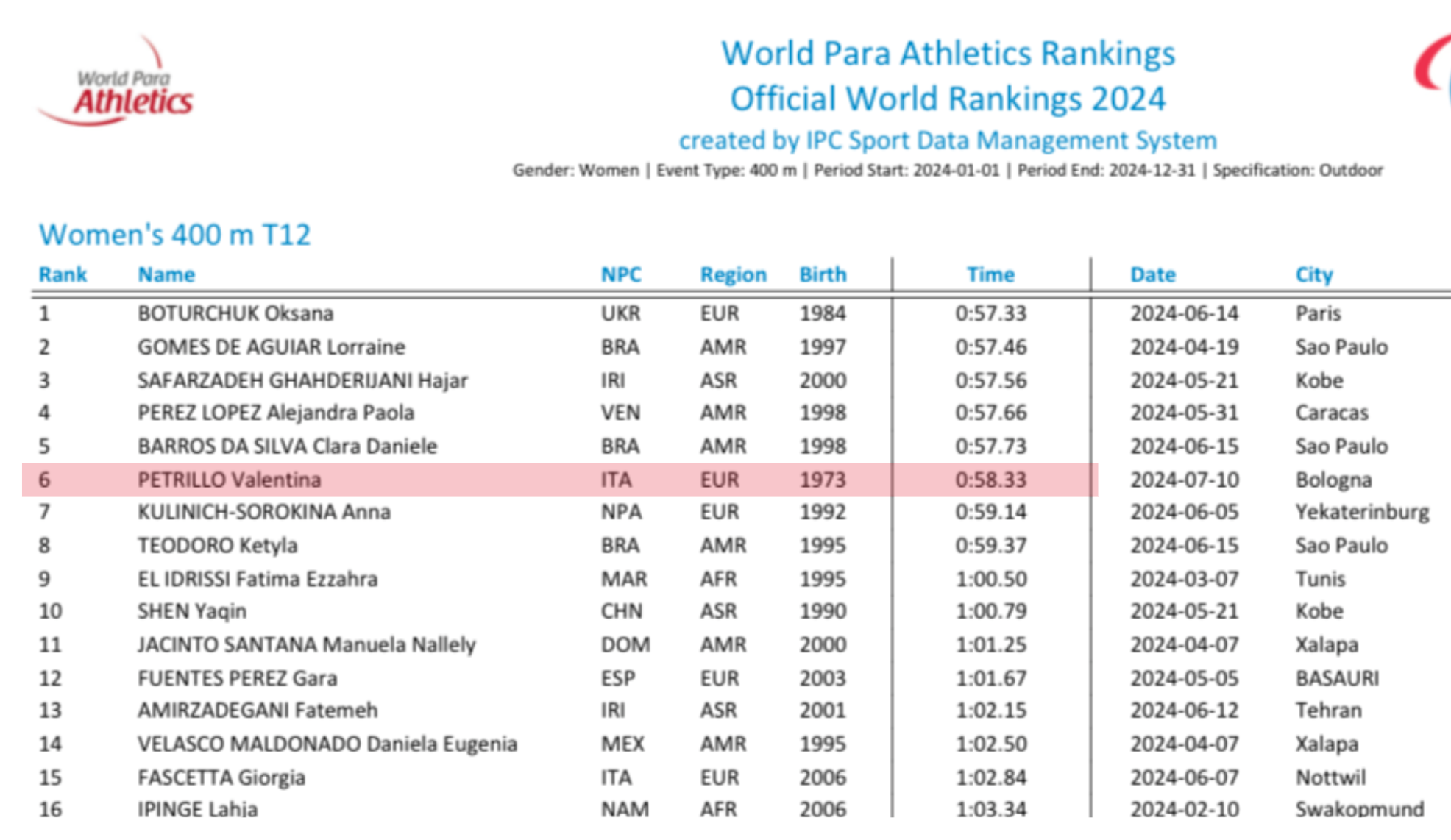
Another study published in 2023 in The Journal of Clinical Endocrinology stated that hormone therapy results in a 30% increase in fat mass in trans women, which offsets other physical attributes like lean mass, height, and weight over two years, balancing athletic performance.
Debates about structural advantages or disadvantages could go on forever. Consider Michael Phelps’ unique physique or the physical differences between black and white athletes in various sports. Jamaica’s Shelly-Ann Fraser-Pryce, who is only 1.52 meters tall, runs 100 meters in 10.60 seconds, close to the women’s world record of 10.49 and faster than most men.
Now, as for the alleged “invasion” of trans athletes.
Trans people make up 1% of the world’s population, a percentage that remains stable among both millennials and Gen Z. They are largely excluded from sports, with more than half of them feeling excluded due to transphobic prejudice (Research by Sport for All Genders and Sexualities 2023). Since the IOC first opened up to trans participation in the Olympics in 2015, only one trans woman has participated in the Olympics — New Zealand’s weightlifter Laurel Hubbard. It happened in Tokyo in 2021, and she was eliminated in the first round.
There is no risk of an influx of “superwomen”. On the contrary, there is hatred, discrimination, and media attacks on trans people, which extend beyond sports and contribute to documented violence and suicides. Is this done to consistently fuel hatred and push reactionary agendas against LGBTIQA+ people at large?
Rosario Coco
Andrea Giuliano